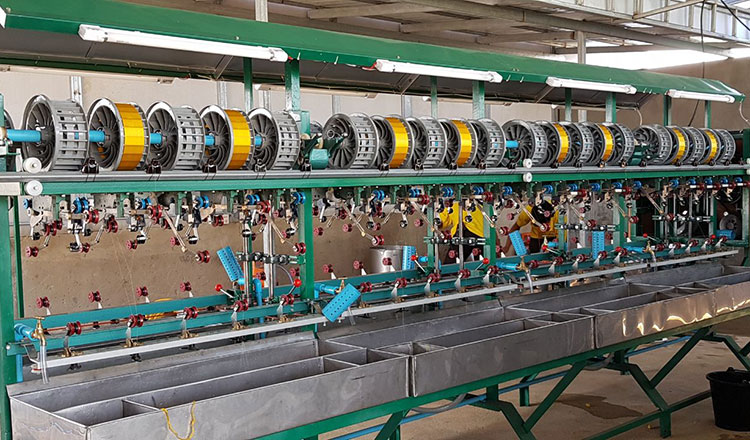Cambodia: Khmer silk sector set to take off amid high benefits
THE silk sector of Cambodia is ready to take off as it has started to provide competitive economic benefits to attract more investors for further development, while experts and people in the industry are appealing for more participation, a prominent Cambodian economist said.
Cambodia’s silk sector has taken off from Mondulkiri province for about three years with silk leaders raising sites, mulberry plantations, silk worms supplied from a research centre and state-of-the-art reeling machines to provide farmers — who are also considered investors — with more attractive income compared with other sources, said the economist.
Mey Kalyan, senior advisor to the National Supreme Economic Council (SNEC), told Khmer Times in an in-person interview in Tuol Kork district that one cycle of producing cocoons can generate between $600 and $700 of income for farmers who do not need to migrate or work in other industries that are in places far from their homes.
“After getting cocoons from raising silk worms by using mulberry, farmers can take those cocoons to sell to a place where a reeling machine is installed and operated in the province and that is the immediate income for them,” said Kalyan, adding that one cycle of producing cocoons takes between one month or one and a half on an average.
However, Kalyan, who is also the founder and chairman of Khmer Silk Center (KSC) located at the Royal University of Phnom Penh (RUPP), has called for more participation from key actors such as development partners including international and bilateral donors, companies in private sector and people as farmers.
The research conducted by KSC shows that the mortality rate of silkworms has gone down to 5 percent over the last five years from about 80 percent in the previous long period, and length of threads has risen to about 600 meters per cocoon from 300 meters, while cocoons raised with new technology has become stronger, according to the economist.
“The potential of participation in producing cocoons and supplying them in the domestic market is still huge as the domestic demand for silk yarn is very big, while the domestic supply is very small and they are being imported from other countries to sell to local producers,” he said.
He estimated that Cambodia has bought about 400 tonnes of silk yarns a year from neighbouring countries such as Thailand and Vietnam for about $45 million, while the Kingdom currently can produce less than one percent compared to the total demand.
Peang Sokha, owner of social business Watthan Artisans Cambodia based in Phnom Penh, told this newspaper that she imported 95 percent of silk yarn as raw material for producing silk cloth and silk products for sale at her shops, while the rest is bought from local producers in Banteay Meanchey and Siem Reap for weaving in Takeo province.
About eighty percent of customers who buy her silk products including name card boxes are foreigners, especially Europeans such as the French, while 20 percent are Cambodians, Sokha said, adding that the cost of imported silk yarn has risen even though Covid-19 restrictions are relaxed, but the price of silk products stay unchanged.
“We prefer locally produced silk yarn to the imported one as it would be easy to manage stocks and to respond to customers. For example, when a customer orders pieces of silk cloth, while we actually know and see clearly, we have enough raw material, we can respond to the customer that we can do it,” Sokha said.
“It is difficult to manage imported stock of raw materials because we do not know what to do when it is out of stock, but when we own our stock, we do not need to check whether we have enough or not and their prices change or not … and the quality of locally produced silk yarn is competitive,” she added.
Sokha is seeking to try to use silk yarn as a raw material produced in Mondulkiri province for weaving silk cloth next month to test the quality and other features.
“It is too early for me to evaluate the quality of that silk yarn because we have not tried to use it yet,” the social entrepreneur said.
Chan Sophal, executive director of Centre for Policy Studies (CPS), told Khmer Times that about 50 farmers in one agriculture cooperative are committed to grow mulberry this year in Mondulkiri province where the weather is cooler and the soil is good and people do not have any other income opportunities.
“Silk production in Cambodia can pick up next year but it will rely on a niche market, while farmers still have faced a shortage of experience to compete with mass markets of silk,” said the agriculture economist, adding that plantation of mulberry and raising silkworm can be done on small plots to a few hectares of land for a household.
“It may be feasible and viable for a number of young people as this market is still restricted to a high-end one,” he said.
Source: https://www.khmertimeskh.com/501110630/khmer-silk-sector-set-to-take-off-amid-high-benefits/


 English
English




